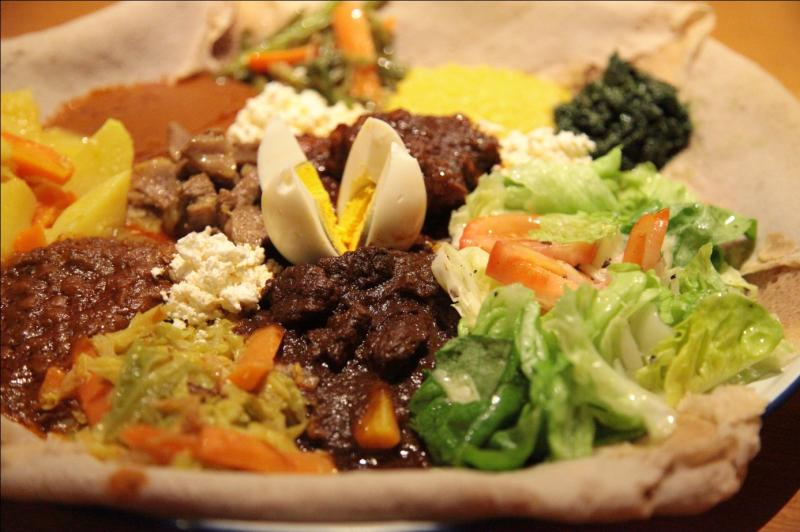KIGALI (HAN) July 9.2016. Public Diplomacy & Regional Security News. Kigali, the Rwandan capital, is abuzz with various activities and development. Grand structures and picturesque views dot the city and attract diverse cultures to the cosmopolitan city.
There are many visitors visiting or living in the capital.
The growth and development of Kigali has seen an increase in the number gourmet restaurants that offer different cuisines and their distinctive tastes.
I recently went on a sensuous journey at the newly opened Habesha Ethiopian restaurant, a hidden gemstone in the blissful Kimihurura neighbourhood. The restaurant is situated next to the United Nations Economic Commission for Africa (UNECA) headquarters.
The delightful aroma of Ethiopian coffee seduces you as you walk in. The shimmering lights from the exquisitely designed chandeliers illuminate the place.
The terrace is built from custom-designed pine wood creating the impression of a cozy wood cabin in a classic western film.
The walls are adorned with garlands of flowers and paintings of Ethiopian (Habesha) emperors and royals dressed in the traditional Habesha “kemis” or tunic dresses. The Habesha restaurant truly feels like home.
For a wholesome meal, I was advised by the owner to try tibs, the finest of Ethiopian cuisine, which I later learnt is a dish prepared to commemorate special events and holidays and to pay a particular compliment or especial respect to someone.
Tibs is an Ethiopian delicacy usually in the form of wat (a very thick stew) consisting of chopped red onion simmered or sautéed in a pot of Ethiopian spice like berbere, a combination of powdered red pepper and niter kibbeh — a clarified butter infused with ginger, garlic and other several spices.
The mixture is steamed for a couple of minutes after which beef fillet is added and garnished with tomato and green pepper.
Tibs is a delectable dish that is delightfully hot and spicy and the beef is tenderised and melts in the mouth.
Tibs is normally served with Injera — a sour dough flatbread with a unique, slightly spongy texture that almost resembles a chapati. Injera is made of rice, sorghum and teff flour mixed in water and fermented for several days hence the mildly sour taste.
The Habesha Ethiopian restaurant offers this delicacy for a fairly affordable price. The customer service is exemplary with the attendants making you feel at home. The meal takes quite some to be prepared but is definitely worth the wait.
Since it’s a cultural restaurant, Habesha Ethiopian Restaurant normally attracts Ethiopians living in Rwanda with also a few locals visiting the place.

Leave a Reply